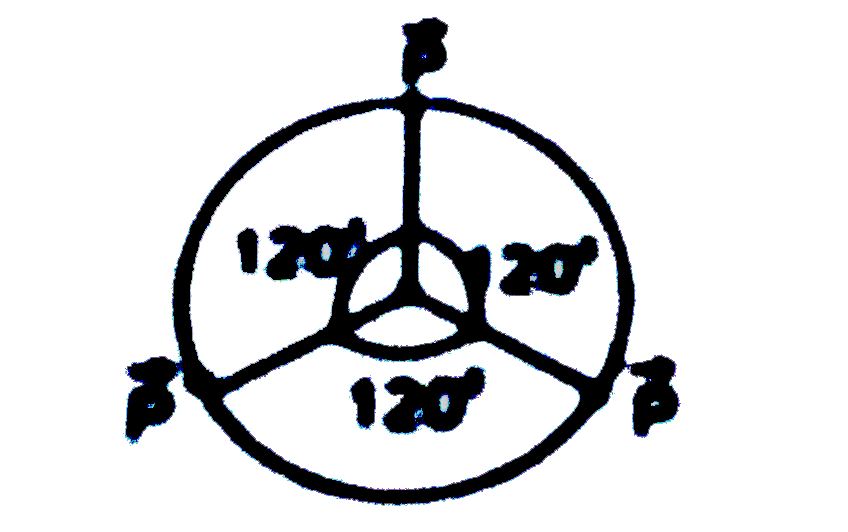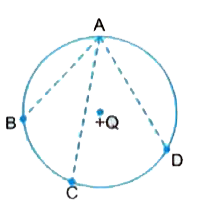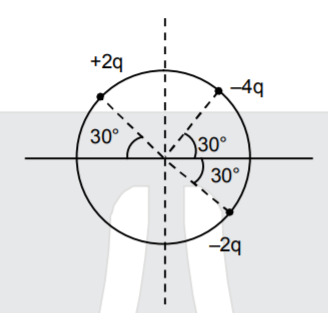A charge q is divided into three equal parts and placed symmetrically on a circle of radius r. The same charge is divided into four equal parts and placed symmetrically on the same circle. The electric field intensities at the centre of the circle in two situations are zero
Q. If a charge (part charge) is removed from one location in both the situations, the ratio of magnitudes of the electric field intensities at the centre is
12
11
23
43
Potentials at the centre
V1=14πε0qr,V2=14πε0qr
Potential energy in situation I is
U1=3×14πε0((9/3))2(√3R) =112√3πε0q2R
When one charge is removed, the field intensity at the centre is due to the removed charge only.
E1=14πε0q/3r2
E2=14πε0q/4r2∴E1E2=43

Topper's Solved these Questions
Similar Questions
Knowledge Check
- Question 1 - Select One
A charge q is divided into three equal parts and placed symmetrically on a circle of radius r. The same charge is divided into four equal parts and placed symmetrically on the same circle. The electric field intensities at the centre of the circle in two situations are zero
Q. The ratio of electric potentials at the centre in the two situations isA2√3B11C43D169 - Question 2 - Select One
A charge q is divided into three equal parts and placed symmetrically on a circle of radius r. The same charge is divided into four equal parts and placed symmetrically on the same circle. The electric field intensities at the centre of the circle in two situations are zero
Q. The potential energy of the system in first situation where the charge is divided into three equals parts isA14πεoq2rB136πεoq2rC112√3πεoq2rD112πεoq2r - Question 3 - Select One
If a circle of radius 12 cm is divided into two equal parts by one concentric circle, then radius of inner circle is:
A6 cmB4 cmC6√2cmD4√2cm
Three equal charges, each +q are placed on the corners of an equilatreal triangel . The electric field intensity at the centroid of the triangle is
View SolutionThree dipoles each of dipole moment of magnitude p are placed tangentially on a circle of radius R in its plae positioned at equal angle from each other as shown in the figure. Then the magnitude of electric field intensity at the centre of the circle will be :
 View Solution
View SolutionA conducting shell of radius R carries charge −Q. A point charge +Q is placed at the centre. The electric field E varies with distance r (from the centre of the shell) as
View SolutionAssertion: Three equal charges are situated on a circle of radius r such that they form on equilateral triangle, then the electric field intensity at the centre is zero.
Reason: The force on unit positive charge at the centre, due to the three equal charges are represented by three sides of a triangle taken in the same order. Therefore, electric field intensity at centre is zero.View SolutionIn the electric field of a point charge Q placed at the centre of a circle, as shown in fingure, a certain test charge q0 is carried from point A to B, C B and D. Then the work done
 View Solution
View Solution


